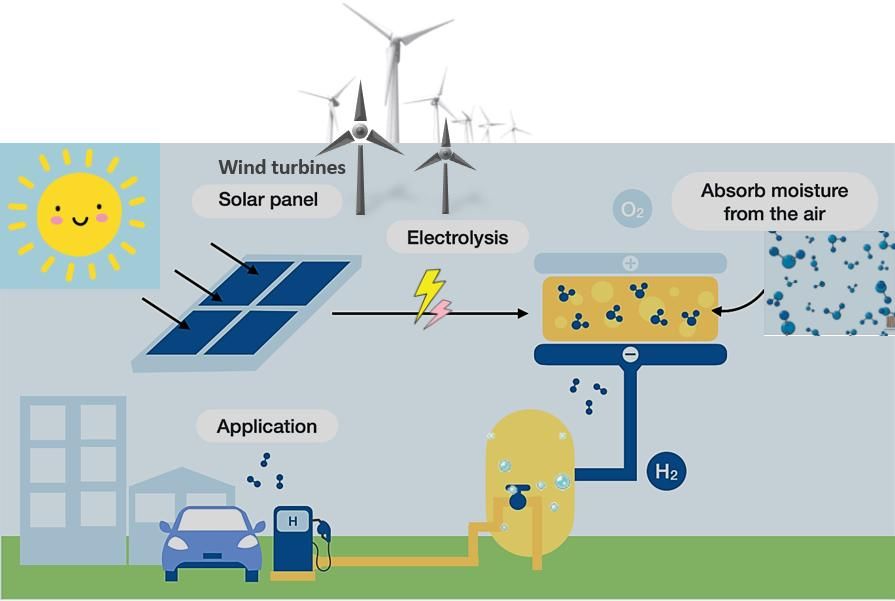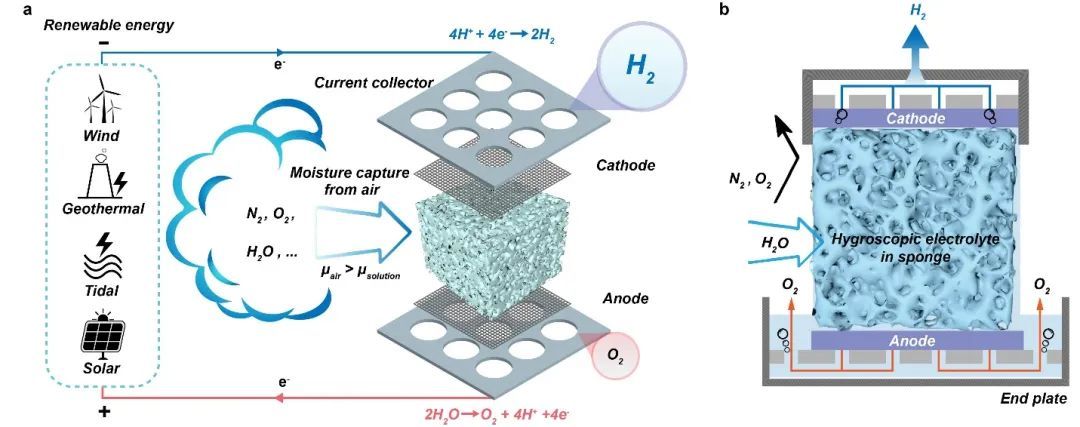Hydrogen derived from water using renewable energy sources, known as "green hydrogen," is theoretically the ultimate clean energy source. Fossil fuel burning causes massive carbon dioxide emissions, leading to greenhouse effect and global warming; while hydrogen burning does not release carbon dioxide or any greenhouse gases, green hydrogen goes a step further, using only water and renewable clean water in the production of hydrogen energy.
Green hydrogen is usually produced by electrolysis of water, that is, the use of electricity to split water into hydrogen and oxygen, where the electricity is derived from renewable energy sources such as solar, wind, geothermal or tidal energy. In addition, hydrogen, as a "storage" medium for renewable energy, can also be further converted back into electricity by means of fuel cells to ensure a stable supply of clean energy. Green hydrogen is essential for a low-carbon economy.
Hydrogen production from water electrolysis relies heavily on clean water resources. According to the United Nations Water Organization, 2.3 billion people around the world live in water-stressed countries and regions, and 733 million people live in areas with high or severe water shortages. Power plants, agriculture and other industries have huge water demands, which also compete with drinking water resources.
Specifically, the ideal locations for green hydrogen production are areas that are rich in solar and wind energy, but are often also extremely water-scarce. Using surface or groundwater as raw materials to produce hydrogen will further aggravate the shortage of water resources, and the potential risks are great.
Turn Air Into Hydrogen
Researchers from the University of Melbourne in Australia, the Ganjiang Institute of Innovation, Chinese Academy of Sciences, and the University of Manchester in the United Kingdom have provided a way to overcome the above problems, designing and validating a device that produces hydrogen without consuming fresh water. The technology, dubbed "Direct Air Electrolyzer" (DAE), recently published in Nature Communications, works by absorbing water directly from the air and then electrolyzing it with renewable electricity to produce hydrogen. This is the first known report that can produce high-purity hydrogen directly from air.

The DAE consists of metal plate electrodes like other electrolyzers, but its core lies in a porous medium between the metal plates, which is filled with a water-absorbing ionic solution that can spontaneously absorb moisture from the air.

The technology of producing hydrogen directly from the air will decouple hydrogen production from fresh water resources and open up new channels for green hydrogen production, which will also bring a series of economic and environmental benefits. By combining solar energy and other renewable energy sources, DAE technology can achieve zero carbonization of certain high-carbon emission industries, and can also provide clean hydrogen energy to remote areas without stable power supply, and can also be integrated with existing systems to promote green Hydrogen production and delivery.
The purpose of this DAE technology is not to replace the traditional hydrogen production process, but to become a perfect supplement. When the fresh water resource is abundant and the price is cheap, the traditional hydrogen production process still has advantages.